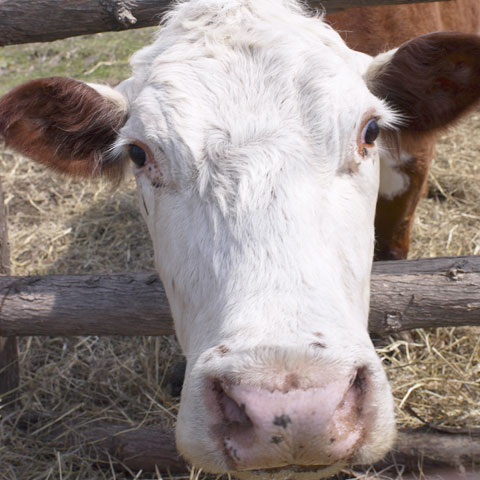Researchers test for cattle disease link in Crohn's patients
03/23/2012 00:00:00

Professor Roger Pickup, Chair of Biomedical and Life Sciences, is leading research at Lancaster University in collaboration with Dr Glenn Rhodes at CEH and Dr Andrew Higham at Royal Lancaster Infirmary. The project is examining the link between the inflammatory bowel condition Crohn’s Disease and a harmful bacterium called Mycobacterium avium subspecies paratuberculosis (MAP), which causes Johne’s disease in a wide range of animals. Johne’s disease is particularly prevalent in sheep and cattle and has many similarities with Crohn’s Disease.
Crohn's disease is an incurable condition which causes suffering in increasing numbers of the UK population. Sufferers experience mild to severe inflammation and damage to the digestive tract. Recent research has shown that most people with chronic inflammation of the intestine of the Crohn's disease type are infected with MAP. In some studies 96 per cent of Crohn’s disease patients were found to carry MAP. Like Johne's disease, the incidence of Crohn's disease is increasing. MAP is significantly associated with Crohn’s Disease but is not accepted as causal.
University Hospitals of Morecambe Bay NHS Foundation Trust is leading on the research for the NHS, and there are plans to invite other trusts in the North Lancashire and Cumbria network to take part in the study.
In an NHS-funded project, researchers, working with hospitals in Cumbria and Lancashire, will analyse samples taken from patients attending routine gastroenterology clinics who are suffering from inflammatory bowel disease - including Crohn’s Disease, ulcerative colitis and irritable bowel syndrome.
Researchers will examine these samples to establish whether the patients test positive for MAP.
These tests will be compared with control samples taken from other patients to see if a higher proportion of the Crohn’s Disease sufferers are carriers of the bacterium. The bacterium will also be isolated from patients and compared to animal sources in the region to examine further the link between environment and human health. They will also examine environmental factors that may influence infection. In parallel, patients will fill in a questionnaire that will help determine the environmental risk factors associated with this disease.
Professor Pickup said: “Many patients with Crohn’s Disease endure years of suffering, some find treatment which helps keep them in remission, but not all. It is particularly worrying that increasing numbers of children are being diagnosed with the condition, which as yet has no cure. It is a public health tragedy which urgently needs to be addressed.
“It is vitally important that we investigate all the possible contamination routes – from the moisture in the air we breathe to the milk we drink – to fully test the hypothesis that MAP may constitute a significant and incremental threat to human health.”
• MAP is the microorganism which causes Johnes disease in cattle. Around 30 percent of current British herds test positive for the disease which causes chronic inflammation of the intestine. These animals shed MAP in faeces and can pass on the pathogen to their young through milk. MAP is also present in some animals that show no clinical signs of the disease and this type of subclinical infection is widespread in domestic live stock, particularly cattle, sheep, and goats.Europe and North America have been particularly affected by MAP, but infection and disease are now spreading worldwide particularly in Asia.
• Hollian Richardson is the Lancaster University-based NHS-funded PhD student carrying out the research under the supervision of Professor Roger Pickup, Dr Glenn Rhodes and Dr Andrew Higham.